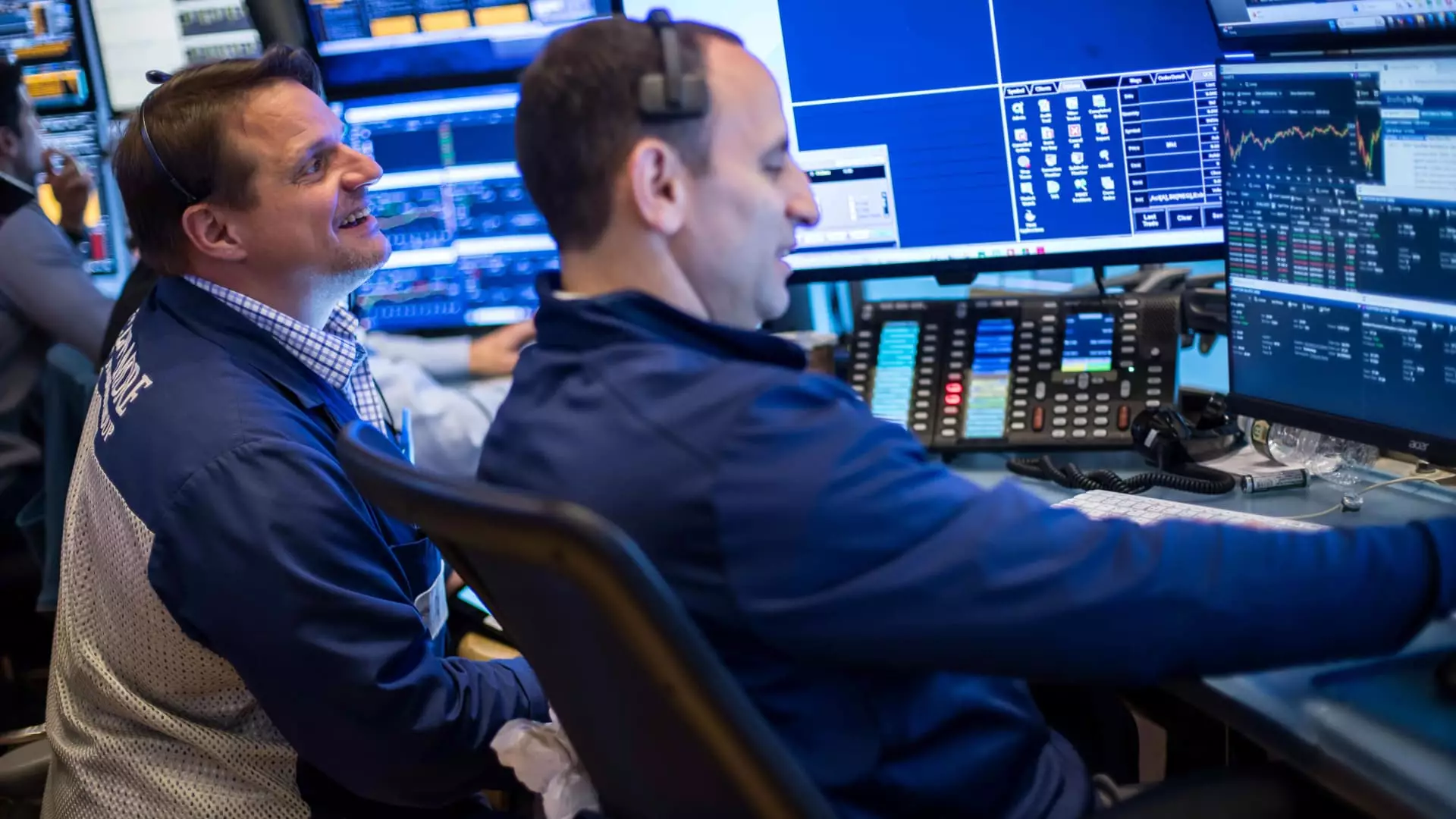The financial markets are notorious for their volatility, yet amidst the uncertainty, Friday delivered a flicker of hope. With the latest nonfarm payrolls data exceeding expectations, Wall Street displayed a robust response, pushing the Dow Jones Industrial Average up by a staggering 443.13 points—an impressive leap of 1.05%. This surge signified more than just a statistical uptick; it reflected a collective sigh of relief among investors who were grappling with fears of an economic nosedive.
The Dow closed at 42,762.87, showcasing a moment where bullish sentiment prevailed over panic. Despite undergoing rough waters earlier in the week, where threats of trade wars had cast a long shadow on investor confidence, Friday’s results momentarily evoked a sense of security. There’s something paradoxical about this ambiance; while the market danced in celebration, whispers of caution echoed through the halls of economic analysis.
Bright Spots in a Dimming Landscape
The S&P 500, buoyed by this newfound optimism, not only surpassed the prestigious 6,000 mark but did so with a gain of 1.03%, settling at 6,000.36. Meanwhile, the Nasdaq Composite rose 1.20%, concluding the session at 19,529.95. All looked rosy, and even Tesla, which took a beating after CEO Elon Musk’s public altercations with high-profile figures, rebounded by over 3%. But let’s not be blinded by this bullish performance; the realities of fluctuating fortunes must serve as a stark reminder that markets can behave erratically based on sentiment alone.
As we peel back the layers of this data, it’s important to recognize an undercurrent of volatility. While these figures might suggest recovery and growth, they are hinting at deeper issues lurking beneath the surface. The Unemployment Rate maintained at 4.2% might provide a veneer of security, but it’s also crucial to maintain a critical eye on the stagnation in other areas of employment and economic growth.
A Tipping Point: Tariffs and Economic Signals
The growing concern surrounding trade negotiations serves as an ominous backdrop to this surge. While the labor market might appear robust, a series of downbeat indicators—such as the rise in unemployment claims and the disappointing ADP report showing only 37,000 new private payrolls—cast shadows over the light of positivity. With the Federal Reserve gearing up for a meeting to discuss interest rates, uncertainty abounds. Many market participants are anxiously waiting to see how the intricacies of international tariffs will tangibly affect the economy.
Anthony Saglimbene, chief market strategist at Ameriprise, articulates the discomfort perfectly: “There’s still some uncertainty about what the inflation impacts are going to be from the tariffs.” This admission itself hints at fragility—the fine line we walk where optimism can turn on a dime to pessimism, depending on external factors and governmental decisions.
Political Polarization Amid Economic Forecasting
The unfolding drama surrounding U.S.-China trade talks, which President Trump recently suggested would commence next week, is yet another chapter in this turbulent narrative. While the President’s optimism elicits a palpable excitement in the markets, we must tread with caution. History has taught us that political posturing often overshadows the actual economic ramifications that follow.
Having fluctuated through the week with mixed signals and conflicting reports, the markets are left in a precarious state. The S&P 500 stands more than 2% below its February highs, prompting analysts and investors alike to ponder whether this momentary surge is sustainable or merely fleeting.
In a broader sense, the market’s response illustrates a critical inflection point where psychological factors—a mixture of rallying hope and creeping doubt—are at play. Investors find themselves straddling the line between optimism and caution, a balancing act that demands keen insight and exceptional strategy moving forward.
As we ponder the implications of this volatile market environment, it becomes vital to foster a political discourse that champions balanced approaches to trade and labor concerns, rather than indulging in inflammatory rhetoric or impulsive decision-making. This approach could be the key to steering the economy towards a more sustainable path where recovery is not just an optimistic tailspin but a real, tangible achievement.


Leave a Reply